[MLC] Die Schreinerarbeiten und mehr
Nach der Donkey Engine als solches geht es heute um den Schlitten und weiteres Zubehör.
Der Schlitten wurde nach Plänen aus der Fachliteratur aufgebaut. Die Hölzer wurden aus Fichtenholz zugeschnitten und mit den nötigen Löchern und Zapftaschen versehen. Wie beim Original wird der Schlitten ausschließlich druch die M4-Zuganker zusammen gehalten.
Die Muttern sind dabei versenkt ausgeführt, damit der Schlittem beim Bewegen im Wald nicht hängen bleibt. Der Bereich unter der Maschine ist offen gehalten, der Teil vor der Maschine mit Deckplanken belegt. Hier können Geräte und Zubehör abgelegt werden.
Eine erste Stellprobe im Hof vermittelt einen Eindruck der finalen Größe. Der Schlitten hat die Grundmaße 125x32cm. Vorne und hinten ist eine Kette mit Ringen durch die Kufen gezogen. Diese dienen zum Anschlagen der Donkey zum Bewegen oder verankern. Die Ringe habe ich später noch gegen die richige Größe getauscht.
Wieder in der Werkstatt ging es zügig weiter mit der Fertigstellung. Auf dem vorderen Querbalken wurde eine Seilführung für die Haulback-Trommel ergänzt. Für die Zugketten an den Kufen wurden noch passende Augenplatten besorgt und montiert.
Ein eher seltener Anblick zeigt das Bild in der Mitte. Hier wurde die Dampfmaschine mit 4 Gewindestangen auf dem Schlitten montiert. Für den sogenannten Donkey-Puncher (Maschinenbediener) ist noch ein separates Brett angesetzt. Auch dies war so gängige Praxis.
Fehlt eigentlich nur noch der Wassertank. Auch hier habe ich mich an vorliegende Pläne gehalten und den Wassertank in Holz nachgebaut. Für den eigentlichen Wasservorrat habe ich einen passenden Mülleimer im Baumarkt gefunden der noch passend abgeschnitten wird.
Um Zugang zum Wassertank zu haben ist der komplette Deckel abnehmbar ausgeführt. Dies war wegen der Zugstangen nicht ganz einfach. Immer Wassertank befindet sich auch die Gasflasche für den Brenner.
Ursrünglich hatte ich für meine Steam-Donkey kein Dach vorgesehen, da es auch beim Vorbild viele Maschinen gab, die ohne eingesetzt wurden Aber irgendwie fehlte mit das Räumliche an meinem Modell. So habe ich mich dann doch für den Bau eines Daches entschieden, das jedoch komplett abnehmbar ist. Es wird von 4 3mm Stahlstiften auf dem Holzschlitten gehalten und kann einfach abgezogen werden.
Das Dach ist wird mit Holz gedeckt, wie es oft üblich war, schließlich gibt’s im Wald Holz an allen Ecken und Enden.
Was nun noch fehlte, das waren passenden Umlenkrollen. Statt wie bisher mit einfachen Baumarkt-Rollen zu arbeiten, wollte ich zu meiner Steam Donkey auch vorbildgerechtere Umlenkrollen haben. Die Wahl fiel auf 3D-Druck in Edelstahl für die Gehäuse der Rollen und Rollen aus Grauguss.
Die große Mutter mag merkwürdig aussehen, aber tatsächlich handelt es sich hier um eine maßstäbliche Nachbildung der Skookum-Rollen. Aktuell stehen mir 6 dieser Rollen in 2 verschiedenen Ausführungen zur Verfügung, die für die wichtigsten Einsatzzwecke ausreichend sind.
Im nächsten Beitrag möchte ich dann das fertige Werk im Detail vorstellen.
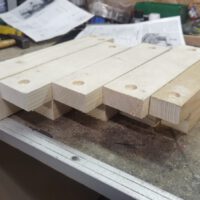

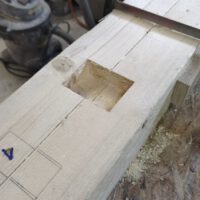
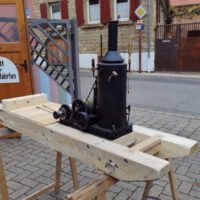
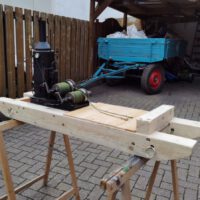
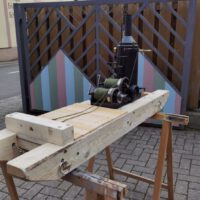
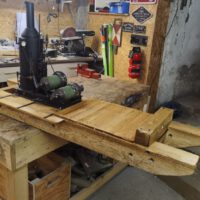
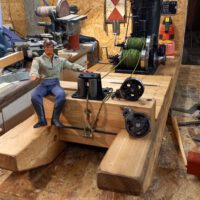
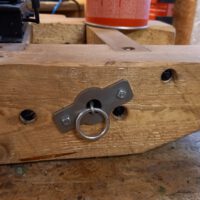
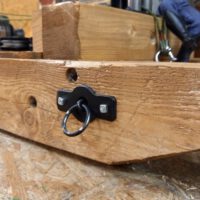
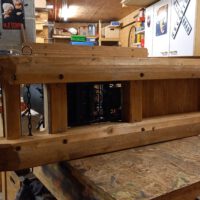
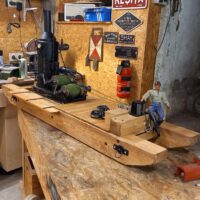
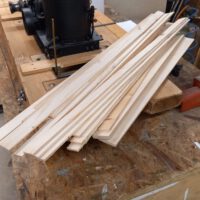
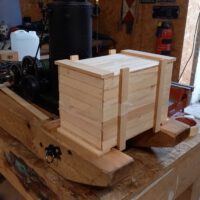
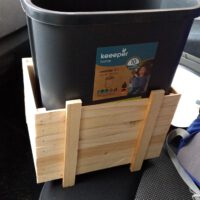
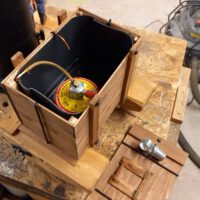
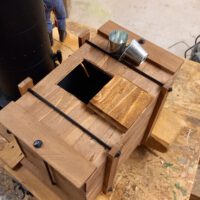
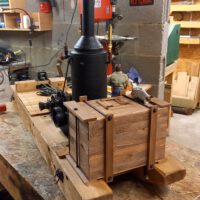
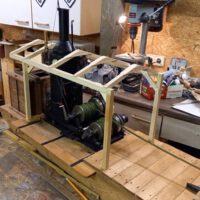
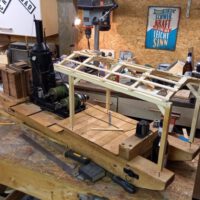
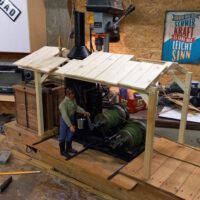
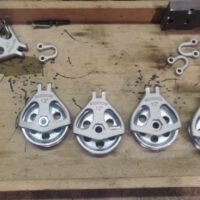
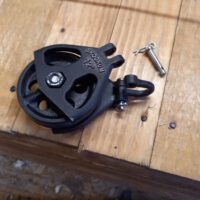
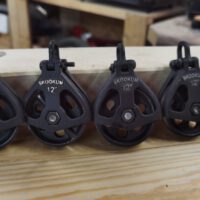
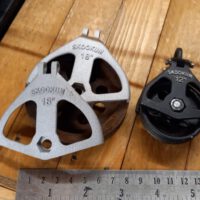
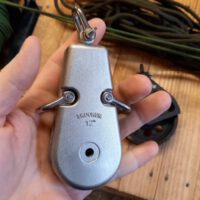
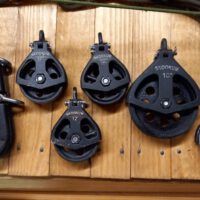
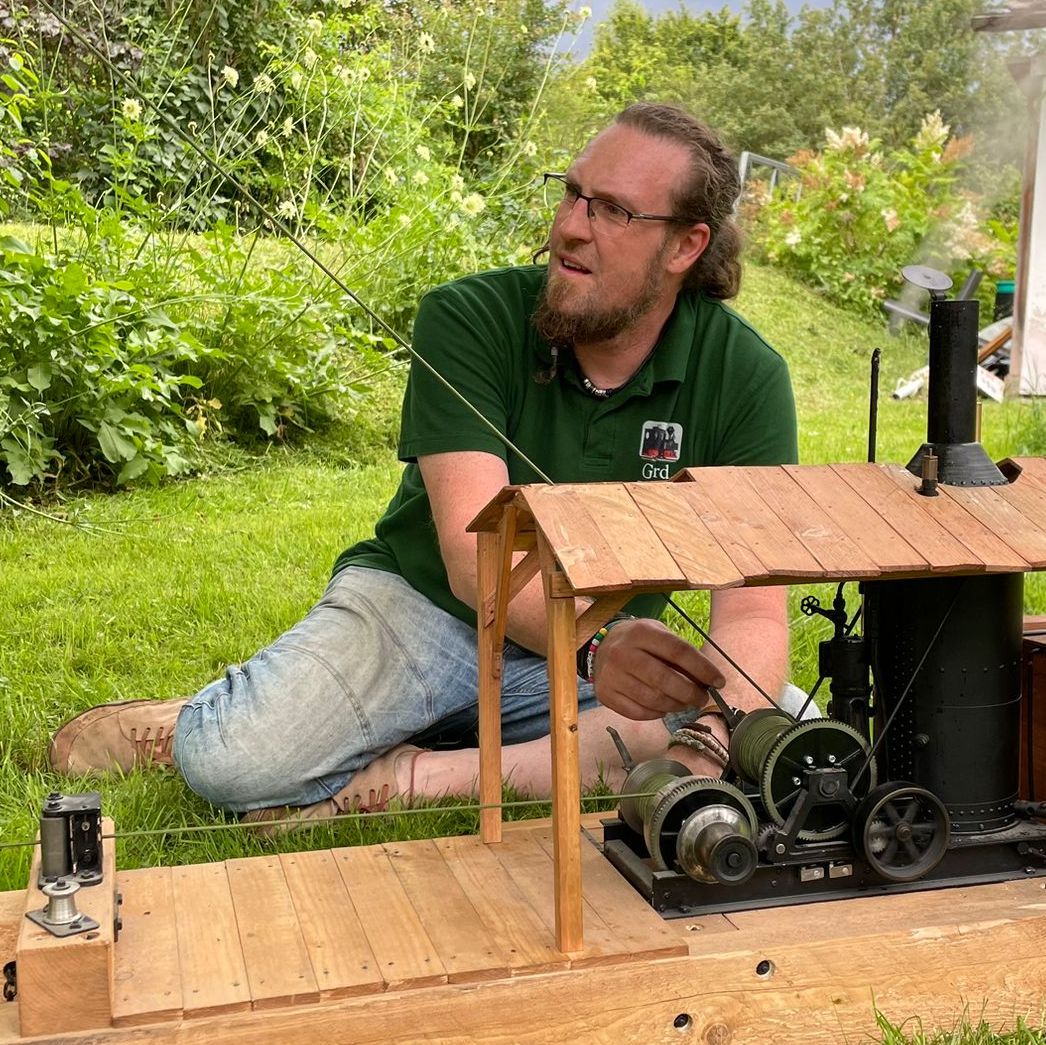
Hallo Gerd,
ich verfolge den STEAM DONKEY Beitrag schon von Anbeginn >Respekt<.
Aber die "Skookum Snatch Blocks" sind der Oberhammer!
Modellbau wie ich ihn liebe.
Grüße aus der Pfalz
Tom